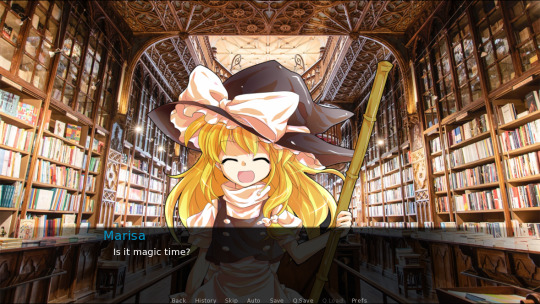#made this back when i was playing vlr in February
Text
The AB Room
#zero escape#virtue's last reward#vlr#vlr spoilers#clover field#alice vlr#kyle klim#k vlr#dio vlr#my art#made this back when i was playing vlr in February#my magnum opus#this round was so funny dude LIKE CAN WE GET IT TOGETHER PEOPLE!!!
93 notes
·
View notes
Text
Ren’Py In 2020 #1: January
I’m trying to make a short but good visual novel with visual novel making program Ren’Py; here is the progress I made in January of 2020
So, in between playing games, writing up posts and getting prep done for college, I’ve been playing around with Ren’Py (Ren’Py is a visual novel making program if you’re not familiar). My goal is to put out a visual novel of ‘not-bad’ quality with original art assets, a length of thirty minutes or so and multiple choices / endings at *some point* this year.
So far, I’ve managed to scrounge up a practice visual novel.

The visual novel is under five minutes in length. I reused a short scene from a NaNoWriMo novel I wrote back in 2016 for the dialogue, replaced the original characters with Touhou characters (and used Dairi’s free-for-fan-use portraits) and I used a few public domain sites for the backgrounds. I also ‘borrowed’ some music from Genso Wanderer’s soundtrack (since it was boring without music and GW was on my mind at the time).
My approach at first was “monkey see, monkey do” with all of the coding. Then I started to look up tutorials when I needed to know how to do specific things. What I’ve figured out so far:
Label start is used to start up the game
Return is used to end a game
You add dialogue by putting down two quotation marks and adding the text in between them (i.e. [“Lorem ipsum“])
You can add character names into the system, and adding character names to dialogue once they’re registered is a matter of adding the character letter before the double quotation marks
You change the background image / layer with the scene function.
You can add foreground images (like portraits) with the show function. Adding foreground images is a lot like layers in Photoshop.
The scene function is also a bit like creating a new canvas or image in Photoshop if you create a new scene when there’s already foreground images; basically it’s a quick way of clearing all the layers without manually using the hide function
Speaking of which, to hide these foreground images, you need to use the hide function.
Scene and show can be followed up with “with [effect]” functions to make scene or character transitions smoother. So far, I know the ‘dissolve’ and ‘fade’ transitions
To add music to a scene, you simply go "play music [name of music file.mp3/wav/whatever”. You must have a music file in the general ‘game folder’ (it does not require a specific folder like gui or images)
To change the game’s title, go to options.rpy and line 15 with
‘define config.name =_(”title“)’
To change the title theme, go to line 64 with
‘define config.main_menu_music = "song title.mp3"
The most difficult thing so far is wrapping my head around “menu’s” (aka the function that lets you make choices). I basically have a document for my “main” project (the one I want to complete that’s decent length) and something about the indenting is all super messed up when I attempt to use the menu function in THAT project. I know it’s messed up because the game always goes “label needs to be indented” even though labels are not normally indented.
When I do indent the label, the whole thing just breaks (it goes from ‘label needs to be indented’ as the only error to ‘line where menu choices occur are all screwed up somehow’). For reference, the menu function works just fine with the practice visual novel.
My goal for February is to look up a bunch of tutorials about menus and labels. The whole thing started to break once those two were involved, so it only makes sense to look into them (that, and indenting)
= = =
Bonus Research:
“What Are Visual Novels, And Why Are They A Thing?” - Get In The Robot
“Visual Novels: Narrative Design in Virtue’s Last Reward” - GDC (this link is actually pretty general, and not just focused on VLR
3 notes
·
View notes